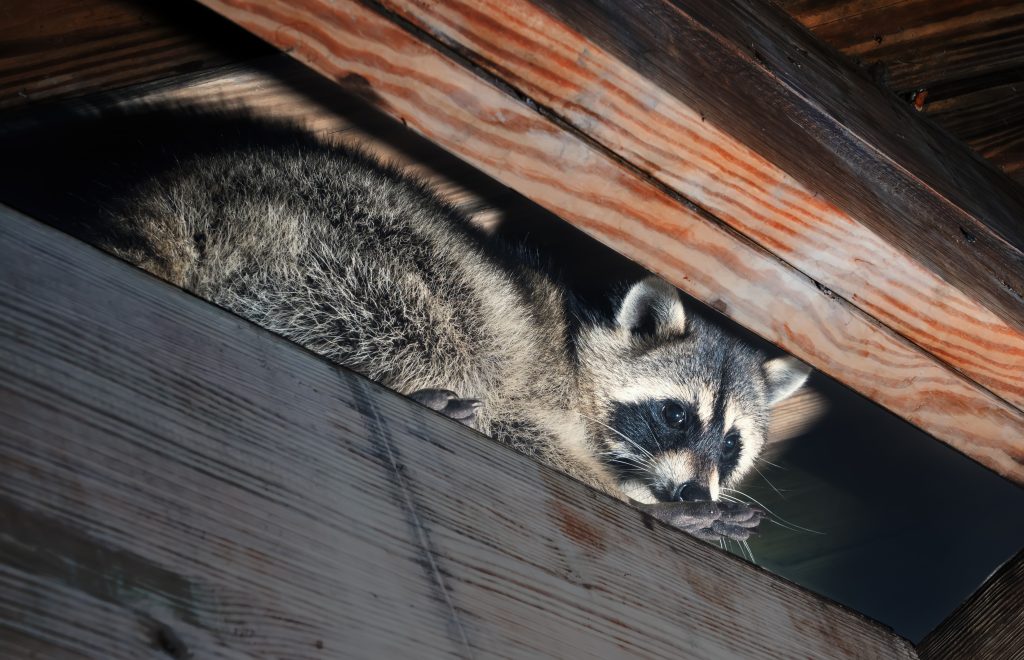North Carolina Wildlife Removal
North Carolina Wildlife
North Carolina is one of the most ecologically diverse states in the Southeast. The three geographical regions are Coastal Plains, Piedmont, and the Appalachian Mountains. Within these regions, there are sub-tropical, temperate, and boreal habitats. Half of the state is forested.
Rabbits, squirrels, raccoons, bats, opossums, deer, and beers are some of the most common wildlife in North Carolina.
The mild winters and hot, humid summers mean animals can stay active for large portions of the year. The Coastal Plains do have a more moderate climate while the Appalachians can have longer, colder winters.
North Carolina Wildlife Control
Wild animals tend to avoid people. North Carolina’s human development has fragmented and reduced natural habitats. Animals will take advantage of food and shelter provided by people. If you limit their access, you can avoid most human-wildlife conflicts.
If animals damage property or are found in your residence, they can be trapped and removed. A permit might be required under certain situations.

Wildlife We Remove in North Carolina
Different types of wildlife are active at different parts of the year. They can be active for most of the year because of North Carolina’s mild winters.
Animals enter homes for food, shelter, or water. This is especially true during the breeding season.
Cities We Serve in North Carolina
Who We Are
When you encounter unwanted wildlife in your home or business it is important to resolve the problem quickly and professionally. At Trutech®, our expert technicians and specialists have over 100 years of combined experience in the wildlife removal industry.
We know how to protect you and your family from the hazards of wildlife in your home or place of business.


Frequently Asked Questions
There is no one-size-fits-all solution; each job requires a custom approach. We inspect every home and build a custom plan to resolve any wildlife problems. We use a variety of techniques including cage traps, direct capture, one-way valves, and deterrents. Exclusion techniques are the most effective way to get rid of animals.
We provide customized solutions to each individual customer so that we may solve the issue as quickly, efficiently, and cost-effectively as possible. The size of the house, type of animal, number of nuisance animals, and length of time of infestation affect the estimated price of wildlife removal.
An estimate may change based on the amount of animal activity or work needed to be done. All estimates are finalized with an exact price before any work begins.
Our goal is to remove any wildlife as humanely as possible — often that means catching and releasing the animal.
Trutech® does not hire subcontractors for animal removal services. We employ expert technicians who are provided ongoing education and training in all aspects of animal control and removal. Many of our technicians hold degrees in Wildlife Biology, Entomology (insects), Ornithology (birds) or Herpetology (reptiles), some with Masters degrees in their specialty field.
Yes! We are licensed and insured.
We start by first removing the wildlife on your property, and cleaning up any damage. From there we’ll work with you to create a customized prevention plan so you won’t have the same issue again.
Typically an animal dies in your home because it became trapped in a hard-to-reach and hidden area. Our expert technicians have the experience and knowledge to find it and then safely remove the carcass from your home.
Our Wildlife Technicians use a pet-safe odor eliminator made of natural organisms and enzymes that consume decaying organic odor-causing matter, eliminating the source of the lingering odor. We use aerosols, oxidizing agents, foggers, and disinfectants with germicides to deodorize until nature completes this task for you.
You should consider a full home exclusion after the smell has been neutralized. Nuisance wildlife found its way into your house once. That entrance leaves your home vulnerable to future animal infestations. Full home exclusions are the most effective form of wildlife control.


